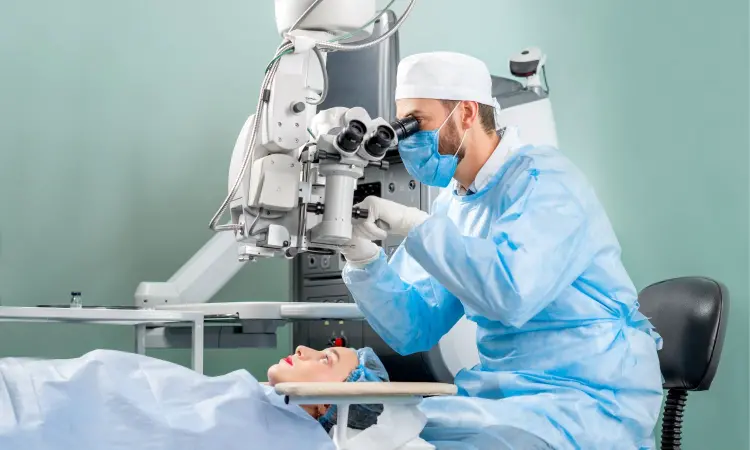- Home
- Medical news & Guidelines
- Anesthesiology
- Cardiology and CTVS
- Critical Care
- Dentistry
- Dermatology
- Diabetes and Endocrinology
- ENT
- Gastroenterology
- Medicine
- Nephrology
- Neurology
- Obstretics-Gynaecology
- Oncology
- Ophthalmology
- Orthopaedics
- Pediatrics-Neonatology
- Psychiatry
- Pulmonology
- Radiology
- Surgery
- Urology
- Laboratory Medicine
- Diet
- Nursing
- Paramedical
- Physiotherapy
- Health news
- Fact Check
- Bone Health Fact Check
- Brain Health Fact Check
- Cancer Related Fact Check
- Child Care Fact Check
- Dental and oral health fact check
- Diabetes and metabolic health fact check
- Diet and Nutrition Fact Check
- Eye and ENT Care Fact Check
- Fitness fact check
- Gut health fact check
- Heart health fact check
- Kidney health fact check
- Medical education fact check
- Men's health fact check
- Respiratory fact check
- Skin and hair care fact check
- Vaccine and Immunization fact check
- Women's health fact check
- AYUSH
- State News
- Andaman and Nicobar Islands
- Andhra Pradesh
- Arunachal Pradesh
- Assam
- Bihar
- Chandigarh
- Chattisgarh
- Dadra and Nagar Haveli
- Daman and Diu
- Delhi
- Goa
- Gujarat
- Haryana
- Himachal Pradesh
- Jammu & Kashmir
- Jharkhand
- Karnataka
- Kerala
- Ladakh
- Lakshadweep
- Madhya Pradesh
- Maharashtra
- Manipur
- Meghalaya
- Mizoram
- Nagaland
- Odisha
- Puducherry
- Punjab
- Rajasthan
- Sikkim
- Tamil Nadu
- Telangana
- Tripura
- Uttar Pradesh
- Uttrakhand
- West Bengal
- Medical Education
- Industry
Early application of subretinal bevacizumab and tPA promising in eliminating subretinal haemorrhage

Accumulation of blood between the neurosensory retina and the retinal pigment epithelium (RPE), known as submacular haemorrhages (SMH), is a significant cause of sudden vision loss. In particular, if the SMH related to CNVM in neovascular age-related macular degeneration (AMD) is large and very thick, the prognosis is poor if left untreated or delayed in treatment. Surgical removal of the SMH through small or large retinal incisions, macular translocation, and RPE choroid grafts are the treatment methods used in the long-standing SMH.
A recent study published in BEYOGLU EYE JOURNAL has concluded that administering subretinal bevacizumab and subretinal tissue plasminogen activator (tPA) effectively removes subretinal hemorrhage under the fovea. It is necessary to continue intravitreal anti-VEGF treatment, as choroidal neovascular membrane activity continues after surgery.
The patients underwent pars plana vitrectomy (PPV) with simultaneous subretinal tPA and subretinal bevacizumab with 18% SF6 tamponade. Researchers evaluated the Anatomical and functional results of the patients before surgery and at the 1st, 6th, and 12th months after surgery, additional treatments, and complications following PPV.
The key findings of this retrospective study are:
- Eight eyes of eight patients with a mean age of 72 were included in the study.
- The mean time from the onset of the symptoms to management was 5.13±1.88 days.
- The patients’ mean best-corrected visual acuity (BCVA) was 2.23±0.14 logMAR at baseline.
- There was a significant increase in mean BCVA at the 1st, 6th, and 12th months to 1.68±0.47 logMAR, 1.58±0.49 logMAR, and 1.51±0.58 logMAR, respectively.
- At baseline, the mean central foveal thickness (CFT) in measurable patients was 836.8±627.02 μm.
- There was a significant decrease in Mean CFT to 370.13±66.13 μm, 373.38±78.33, and 367.75±116.43 μm in the 1st, 6th and 12th month, respectively.
- At baseline, the maximum measurable subretinal hemorrhage height was 814.2±556.45 μm.
- The mean number of anti-VEGFs performed for 12 months after surgery was 4.13±2.1.
- At month 12, the ellipsoid zone could not be detected in 6 patients.
The present study aimed to evaluate the outcomes of simultaneously administering bevacizumab and subretinal tPA to patients with SMH secondary to neovascular AMD with functional and anatomical results in 12-month follow-ups, and the results showed significant improvements in both BCVA and CFT decrease at all follow-up visits.
Repeated injections are necessary to maintain the increased visual acuity, and that there was no correlation between BCVA and CFT at month 12 with the maximal SMH height or the maximum lateral width of SMH.
Reference:
Limon U et al. Efficacy of Simultaneous Application of Subretinal Tissue Plasminogen Activator and Bevacizumab for Submacular Hemorrhages. Beyoglu Eye J. 2023;8(3):198-207. Published 2023 Sep 13.
BDS, MDS in Periodontics and Implantology
Dr. Aditi Yadav is a BDS, MDS in Periodontics and Implantology. She has a clinical experience of 5 years as a laser dental surgeon. She also has a Diploma in clinical research and pharmacovigilance and is a Certified data scientist. She is currently working as a content developer in e-health services. Dr. Yadav has a keen interest in Medical Journalism and is actively involved in Medical Research writing.
Dr Kamal Kant Kohli-MBBS, DTCD- a chest specialist with more than 30 years of practice and a flair for writing clinical articles, Dr Kamal Kant Kohli joined Medical Dialogues as a Chief Editor of Medical News. Besides writing articles, as an editor, he proofreads and verifies all the medical content published on Medical Dialogues including those coming from journals, studies,medical conferences,guidelines etc. Email: drkohli@medicaldialogues.in. Contact no. 011-43720751


